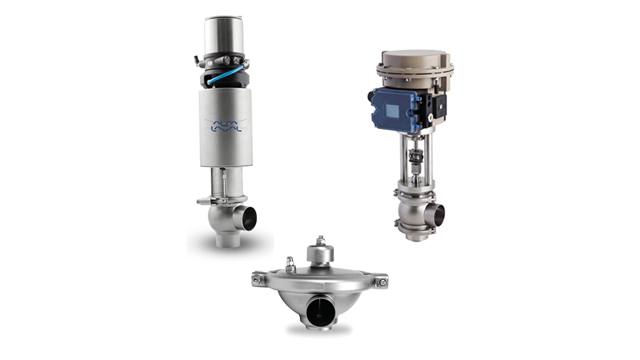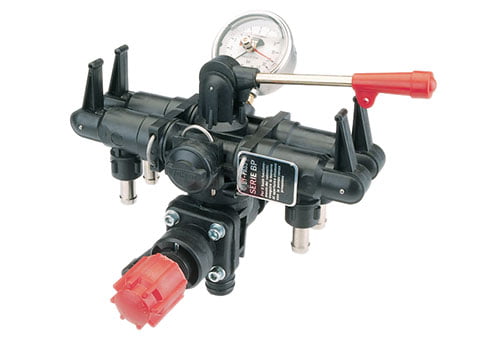How Control Valves Influence Power Efficiency in Industrial Settings
How Control Valves Influence Power Efficiency in Industrial Settings
Blog Article

Maximize Energy Financial Savings and Convenience With Advanced Building Automation Controls
In the realm of contemporary style and facility management, the integration of advanced building automation controls stands as a crucial improvement. By harnessing the power of automation, buildings can adjust, react, and evolve in means that were when unimaginable.
Power Effectiveness Advantages
Energy efficiency advantages can significantly decrease energy consumption and functional prices in buildings. Energy-efficient systems, such as sophisticated building automation controls, can enhance the use of resources like air conditioning, home heating, and lighting, leading to reduced energy expenses over time.
Moreover, boosted energy efficiency can extend the life expectancy of building tools and systems. By operating much more efficiently, a/c systems, lighting fixtures, and various other building elements experience much less deterioration, leading to decreased upkeep and replacement expenses. Furthermore, energy-efficient structures frequently regulate higher residential property worths and rental prices, supplying long-lasting monetary advantages to proprietors.
Furthermore, energy performance can enhance owner comfort and efficiency. Effectively controlled interior environments with ideal lights and thermal conditions develop a more conducive and pleasurable office, bring about improved employee complete satisfaction and efficiency. In general, the energy effectiveness advantages related to sophisticated structure automation controls are multifaceted, encompassing expense financial savings, ecological stewardship, and owner well-being.
Enhanced Comfort Control
Enhancing convenience control in structure settings calls for a sophisticated combination of sophisticated automation systems for ideal owner well-being. By utilizing sophisticated structure automation controls, centers can customize the interior setting to fulfill the certain demands and preferences of passengers. These systems make it possible for specific policy of air flow, illumination, and temperature, developing a comfy and effective atmosphere. Resident contentment and efficiency are carefully connected to thermal convenience, making it vital to have systems in position that can adjust to altering problems in real-time.
By incorporating these innovative controls, structures can not just enhance comfort however additionally improve energy efficiency by maximizing system operations based on actual occupancy and usage patterns. Eventually, focusing on owner convenience via innovative automation systems leads to a much more delightful and much healthier interior setting.
Functional Performance Improvements

Furthermore, the application of real-time monitoring and analytics devices enables structure operators to determine energy inadequacies and functional anomalies promptly. By continually checking energy usage patterns and system performance metrics, modifications can be made in real-time to optimize power consumption and ensure peak functional efficiency. control valves. In addition, incorporating need reaction techniques into you can try here structure automation controls can further boost operational performance by dynamically adjusting power use based upon grid conditions and pricing signals
Indoor Climate Optimization
Effective indoor environment optimization is an essential aspect of building automation controls, ensuring occupants' convenience and well-being while making best use of power savings. By making use of sophisticated sensing units and controls, constructing automation systems can continuously adjust and keep an eye on temperature level, humidity levels, air high quality, and ventilation to develop an ideal indoor setting. Preserving constant and comfy problems not just enhances resident complete satisfaction but additionally boosts efficiency and total wellness.
Interior climate optimization additionally plays an important role in energy effectiveness. By fine-tuning home heating, air conditioning, and ventilation systems based upon real-time information and tenancy patterns, building automation controls can considerably decrease energy usage - control valves. As an example, applying techniques such as demand-controlled air flow and thermal zoning can assist decrease power waste while ensuring that each location of the building obtains the necessary conditioning.

Lasting Setting Development
Building automation regulates not just enhance indoor environment problems for energy performance and owner comfort however additionally lay the structure for developing a lasting environment with strategic management of systems and sources. By incorporating innovative building automation modern technologies, such as sensing units, actuators, and smart software application, facilities can readjust and keep track of energy usage in real-time to reduce waste and lower their carbon impact. These systems enable anticipating maintenance, recognizing potential issues prior to they rise and maximizing equipment performance to enhance durability and efficiency.
In addition, sustainable environment production prolongs past power monitoring to incorporate water preservation, waste decrease, and indoor air high quality improvement. Structure automation controls can regulate water use, detect leaks, and ensure appropriate garbage disposal methods, adding to general sustainability initiatives. Additionally, by checking and controlling air flow and filtration systems, these technologies improve resident wellness and performance while lowering power intake related to heating and cooling operations.
Conclusion
In conclusion, progressed structure automation controls deal substantial advantages in terms of power savings, convenience control, operational effectiveness, interior environment optimization, and creating a lasting atmosphere. By implementing these controls, buildings can attain optimal performance while lowering power usage and enhancing occupant comfort. It appears that the use of sophisticated automation technology is critical in improving structure performance and creating a more sustainable future.
Energy performance advantages can dramatically decrease power usage and operational costs in structures. On the whole, the energy efficiency advantages connected with advanced structure automation controls are multifaceted, incorporating expense financial savings, ecological stewardship, and resident health.
Furthermore, including demand feedback strategies into building automation controls can even more improve functional performance by dynamically adjusting energy usage based on grid conditions like this and pricing signals.
Building automation controls not only optimize indoor environment problems for power effectiveness and owner convenience yet likewise lay the foundation for producing a sustainable atmosphere with tactical administration of systems and sources.In final thought, advanced building automation controls offer significant advantages in terms of power financial savings, convenience control, operational effectiveness, indoor climate optimization, and creating a sustainable atmosphere.
Report this page